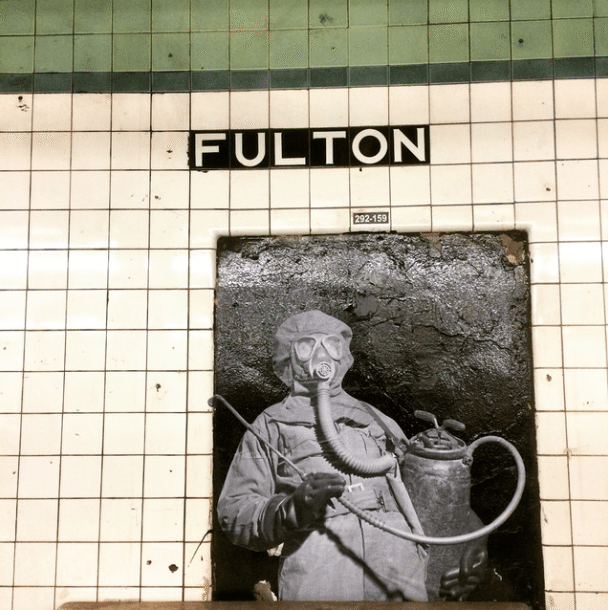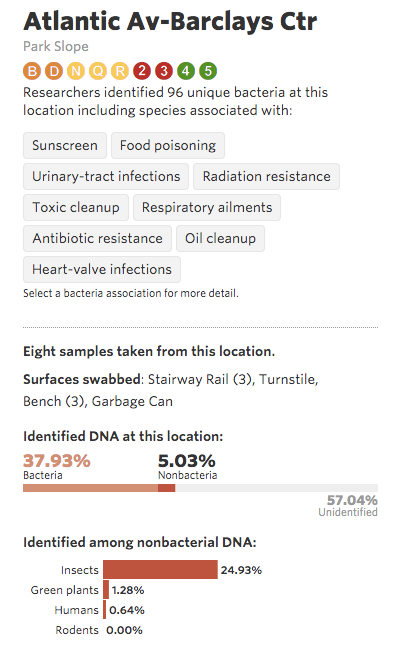How Dirty Is Your Subway Station? There’s A Map For That


Now you don’t have to wonder what exactly you’re touching — or avoiding — on the subway because there’s a comprehensive map of almost every type of species (of bacteria, food remnants and other organic material) there, and its conveniently organized by train station.
Researchers from Weill Cornell Medical College spent 18 months collecting, documenting and testing DNA samples from across New York City’s 466 open subway stations. The results are startling: as reported in the Wall Street Journal, scientists discovered 15,152 different species, “most of them harmless or unidentified,” nearly half of them bacteria, and 67 of those bacteria species linked to disease and infections such as staph and food poisoning.
In 18 months of scouring the entire system, [Dr. Christopher Mason] has found germs that can cause bubonic plague uptown, meningitis in midtown, stomach trouble in the financial district and antibiotic-resistant infections throughout the boroughs.
Frequently, he and his team also found bacteria that keep the city livable, by sopping up hazardous chemicals or digesting toxic waste. They could even track the trail of bacteria created by the city’s taste for pizza—identifying microbes associated with cheese and sausage at scores of subway stops.
Naturally, what some people find fascinating, MTA and city health department officials don’t, as noted in The New York Times.
“As the study clearly indicates, microbes were found at levels that pose absolutely no danger to human life and health,” Kevin Ortiz, a spokesman for the Metropolitan Transportation Authority, said in an email. And the city’s health department called the study “deeply flawed” and misleading.
Dr. Mason responded by saying he and his team had simply presented their complete results.
“For us to not report the fragments of anthrax and plague in the context of a full analysis would have been irresponsible,” he said. “Our findings indicate a normal, healthy microbiome, and we welcome others to review the publicly available data and run the same analysis.”
Harmless or not, the long lists are enough to make you queasy and Brooklyn stations didn’t get off with shorter lists compared to their Manhattan subway counterparts.

Fort Greene and Clinton Hill stations are apparently incredibly varied in their bacteria-collection, although it seems that people in our neighborhoods often have respiratory problems and like to eat cheese.
- Atlantic Avenue/Barclays: sunscreen, food poisoning, urinary tract infections, radiation resistance, toxic cleanup, respiratory ailments, antibiotic resistance, oil cleanup, heart valve infections
C line
- Clinton & Washington Avenues: antibiotic resistance, radiation resistance, oil cleanup, toxic cleanup, respiratory ailments, tetanus, Italian cheese, kimchi and sauerkraut
- Lafayette Avenue: food poisoning, urinary tract infections, Italian cheese, sepsis, radiation resistance, toxic cleanup, respiratory ailments, diarrhea
G line
- Classon Avenue: food poisoning, antibiotic resistance, radiation resistance, toxic cleanup, respiratory ailments
- Clinton & Washington Avenues: medical-device infections, oil cleanup, toxic cleanup, respiratory ailments, sunscreen
- Fulton Street: food poisoning, urinary-tract infections, oil cleanup, toxic cleanup, respiratory ailments




